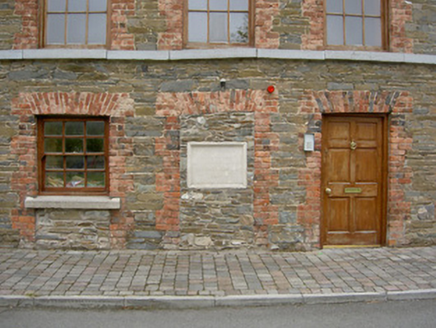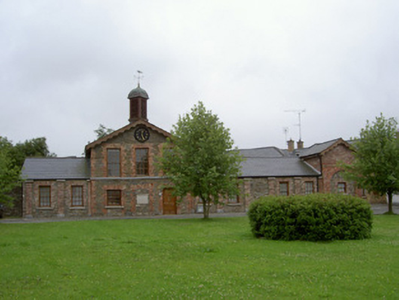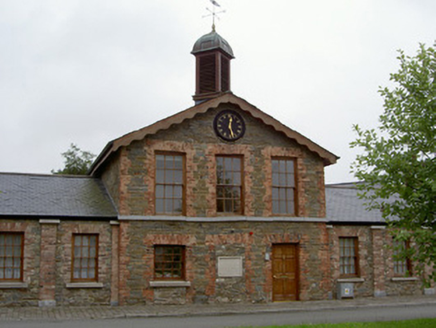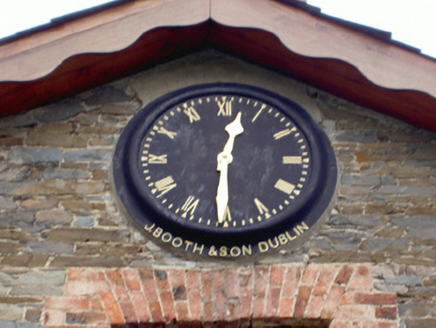Survey Data
Reg No
13828012
Rating
Regional
Categories of Special Interest
Architectural, Social
Previous Name
Collon Market House
Original Use
Market house
Historical Use
Court house
In Use As
House
Date
1800 - 1840
Coordinates
299864, 282158
Date Recorded
07/07/2005
Date Updated
--/--/--
Description
Detached eleven-bay single- two-storey stone former market house, built c. 1820, later used as court house, and subsequently converted for use as residential accommodation. Three-bay two-storey gabled main block, two-bay single-storey wing to north, five-bay single-storey wing to south terminating in one-and-a-half-storey gable-fronted pavilion, return to rear (east). Pitched slate roofs, clay ridge tiles, red brick flat-capped chimneystack, stained timber wavy-edged bargeboards, profiled aluminium gutters on projecting stained timber fascias, stained timber louvred belfry with copper dome and weather vane added, 1822. Coursed rubble stone walling, red brick quoins, red brick pilasters on dressed limestone bases to west elevation, tooled limestone continuous sill string course to first floor, clock dated 1822 to west gable main block, round-headed red brick blind arch to west elevation pavilion. Square-headed window openings, red brick jambs and flat arches, concrete sills to ground floor, limestone sills to first floor, painted hardwood six-over-six and two-over-two sliding sash windows, painted timber casement windows to rear. Square-headed door openings to west elevation main block, red brick jambs, flat brick arches, central opening built-up containing Portland limestone plaque inscribed "The clock in this belfry was the bequest of the Revd Alexander Bradford Lane Vicar of this Parish 1822", window in north opening, hardwood panelled door in south opening. Located on east side of Market Square, facing green space.
Appraisal
This former market house, which was utilised as a court house until 1920, has a fascinating history. Apparently truncated by removal of most of the north wing and much-altered as a result of reuse, it stills retains a dominant sense of presence. Details such as the louvred belfry, clock and inscribed limestone plaque all add to its historic significance.







